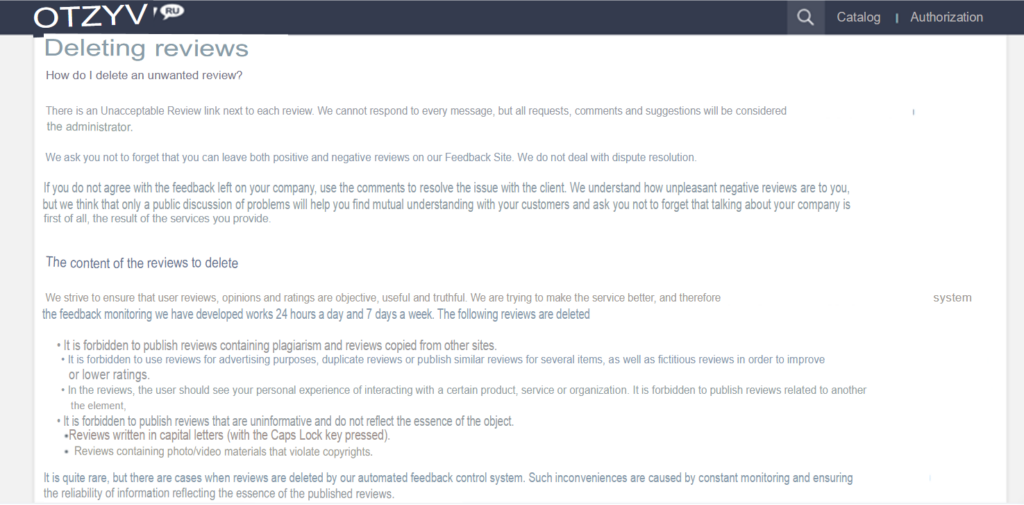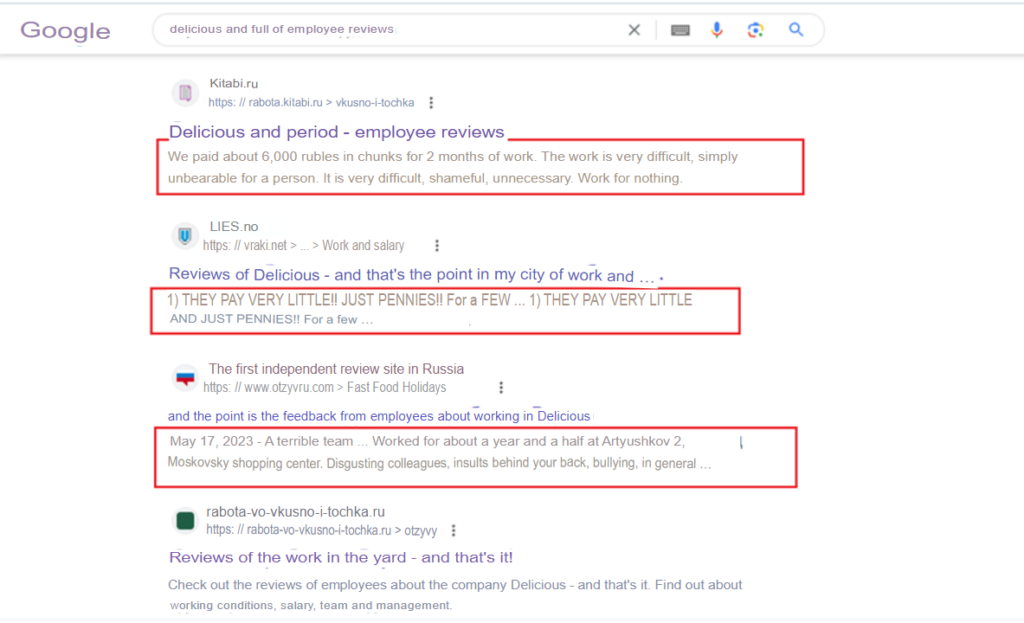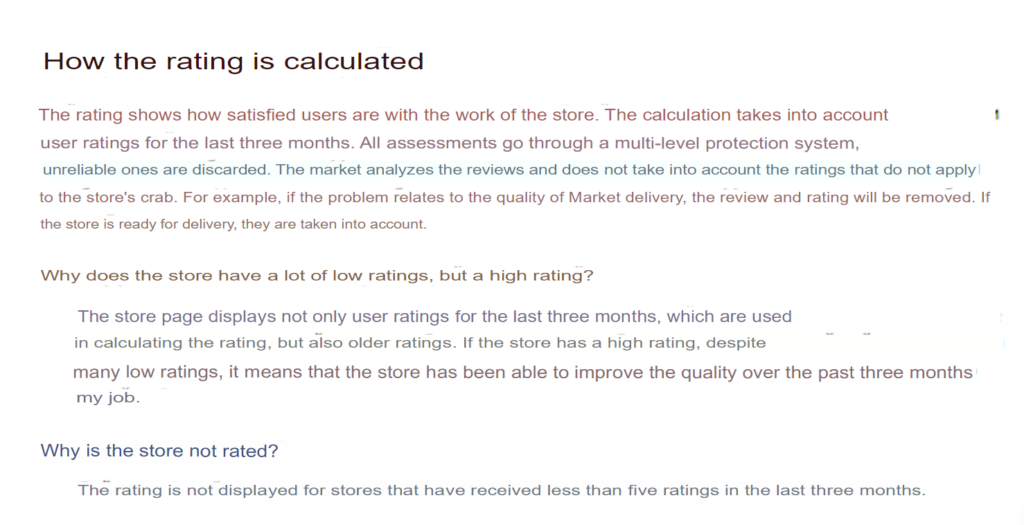The Time has Come to Discuss the Key Aspect of Online Reputation Management – Review Sites in Russia. The Art of Publication.
It’s time to delve into a crucial aspect of online reputation management – review websites. These platforms can be both a blessing and a curse for many brands. When people seek information about a brand, they pay attention to reviews. Whether it’s the Russian Post or VTB Bank, reviews become a significant decision-making factor for consumers.
However, it’s essential to consider who writes reviews and who reads them. Often, reviews are generated by users who harbor dissatisfaction or resentment towards a brand. As a result, review platforms, like magnets, attract a flow of negativity. This is a concern for companies anxiously awaiting the appearance of new batches of negative reviews.
Reviews can serve as a support and cause apprehension. They can reflect both positive and negative aspects. Negative content posted on review platforms can receive likes, be reposted, and spread across the internet. Therefore, it’s crucial to skillfully manage reviews and perhaps even find a compromise. Reviews are an integral part of audience interaction, and it’s essential to learn how to engage with them effectively.
A global study by the major marketing company Nielsen revealed that 90% of consumers worldwide trust recommendations from acquaintances, and 70% rely on online reviews from other consumers. In the context of Russia, 86% of the study participants confirmed their trust in recommendations from friends and family, while 55% expressed confidence in online reviews from other consumers.
This indicates that reviews play a key role in shaping consumer perception. Furthermore, the harsh reality is that someone reads them, and even more unpleasantly, someone actively participates in writing them.
In this article, we will explore effective methods of dealing with websites specializing in reviews to better control and manage your brand’s reputation in the online space.

No Passage Without a Trace: Review Moderation on Review Platforms
In this section, we will address a crucial topic – the review moderation system. Every brand owner wishes for their profiles on review platforms to showcase numerous positive reviews with the highest ratings, and as few negative ones as possible. Sometimes, a customer may leave a review, but it remains unseen, while negative reviews pass through moderation more quickly.
To avoid such situations, it is essential to familiarize yourself with the rules of various review platforms and understand how their moderation processes work.
Let’s delve into a specific example. Consider one of the popular review platforms that often appear in search results. Scroll through the page in search of moderation rules and pay attention to an interesting button located at the bottom. In the provided screenshot, you can see this button clearly labeled as “delete reviews.”

Indeed, that’s what we want to find out. We follow the link, and what do we discover there? We encounter an extensive volume of text containing rules and procedures for removing reviews.
Let’s see what are the key points we should remember from here.

Most platforms share a similar set of criteria for the perfect review:
- The review should be informative, describing your personal experience.
- Avoid using all caps; write calmly.
- Copying reviews from other review sites is prohibited; plagiarism is not welcomed.
In our example, the most interesting aspect is the note at the bottom: “In rare cases, reviews are rejected by an automated system.” However, it doesn’t specify the exact criterion. Usually, a link is provided, clarifying that this is done to ensure the accuracy of the information.
Let’s consider another example – yell.ru. It’s a wonderful, aesthetically pleasing review platform with an attractive design, including a mobile application.

What should we pay attention to here?
- Avoid Specific Negative Mentions: It’s important to refrain from mentioning specific individuals or names in a negative context. In other words, criticizing a particular employee may lead to the removal of the review.
- Prohibition of Any Form of Advertising: Any form of advertising is not allowed.
- Other Reasons Causing Justified Suspicions: There are other reasons that raise justifiable suspicions among moderators, with an interesting and non-transparent formulation.
- Irrevocable Published Reviews: Published reviews cannot be deleted at the author’s request. If your opinion about a company changes or if you have new concerns, it is preferable to write a new review.
Consider this scenario: A customer gives you a one-star rating and expresses a lot of negativity over a minor issue. Perhaps they misunderstood, didn’t read your site’s rules, or acted impulsively. You promptly contacted them, explained the situation, and they decided to change their opinion and give you a five-star rating. They won’t be able to modify the old review; they have to leave a new one. Thus, 1 + 5 = 6/2 = 3. In the end, your average rating would be 3 stars out of 5. This might be unpleasant, considering the person might have simply made a mistake. It’s important to note that some review platforms don’t allow the removal of reviews, even if the customer realizes their error later.
Now, let’s move on to a specific example – Yandex Market. It’s a significant marketplace that allows the placement of products with direct access to purchase from there. However, what’s crucial to understand is the moderation rules on this platform. Let’s go through the key points.
Moderation rules are presented in the Yandex Help/Search and Product Selection/Reviews and Videos/Requirements for Reviews and Comments section. It states that you can leave a review for any product, even if it was purchased.

From the screenshot, it is evident that it’s important to write good, informative, and vivid reviews while avoiding advertising. Nothing particularly unusual, it aligns with common practices.
Yandex Market also provides explanations for why comments and reviews may be rejected or deleted. This can happen for various reasons, as specified in the quality control service’s email or on the “My Publications” page.
A review may be rejected for the following reasons:
- By the automated system. It’s noteworthy that the principles of this system remain confidential, creating some uncertainty regarding moderation rules.
- Upon the store or manufacturer’s request. If a complaint is filed against you, you can provide the requested documents if you disagree.
- With a moderator’s comment. In this case, the moderator leaves a comment for you with recommendations for adjusting the review.
In summary, even reviews from real customers can be rejected. Keep this in mind when addressing complaints about genuine customer reviews not getting through. It’s crucial to carefully review the moderation rules for reviews, understanding what is acceptable and what is not, for successful handling of reviews on any platform.

How to Overcome Challenges in Publishing Reviews on Review Platforms with Ease
We continue our exploration into the world of reviews. Working with them is often associated with certain difficulties: mysterious snippets, the enigmatic origin of negativity, and uncertainty about why positive reviews are so rare. In this section, we will together examine the main challenges to make your experience with reviews smoother.
The first issue that users face when promoting their brand or product is negative snippets.
So, what are they? A snippet is a brief representation of websites in search results. Reviews are often highlighted in search results using specific descriptions.
It is worth knowing that a snippet consists of three main components.

Blue – the site’s title.
Green – the link to the reviewer’s profile, which is pulled into the search results (in Google, as shown in the screenshot, it’s in black text, in Yandex, it appears in green).
Black – the textual description already present on the site according to Google and Yandex.
Reviews often appear in search results with ratings directly in the snippet. For example, a customer might see a review with three out of five stars, which can influence their decision. Negative snippets can deter potential customers without even visiting your site. Therefore, it’s crucial to monitor the snippets of review sites you engage with.
Remember, reviews often play a crucial role in search results and can have a negative impact on your brand. Managing your reputation at this stage is an important aspect of brand strategy. Sometimes, there are strongly expressed snippets that can leave a negative impression. For instance, an employee goes on vacation and writes that it was the happiest day of their life, adding the brand to the list of blacklisted employers. It may be an unfair judgment, but it’s already reflected in the review snippet. Thanks to such vivid snippets, a site attracts attention and traffic.

Therefore, it is crucial not only to acknowledge reviews but also to understand their essence. You need to learn how to effectively manage your interactions with them. Another important point is that reviews can create a chain of negative snippets in search results.
At the snippet formation stage, there is a risk of losing a potential customer. This is unpleasant because the conversion of sales may decrease during a Google or Yandex search, even when the user has not visited your site. Therefore, it’s important to remember that reviews often influence search results and can have unfavorable snippets that are not beneficial for you.
Another category to consider is branded reviews. These are specifically created for a brand. Try searching “reviews” in a search engine, and you’ll see numerous resources like “MTS reviews,” “Beeline reviews,” “IKEA reviews.” Such review platforms can be created by anyone: competitors, company employees, or even unknown individuals, with the intention to sell the brand later on. Some review platforms monetize, meaning that negativity is intentionally created to attract attention.
You might also face another unpleasant situation, namely, the creation of a VKontakte group dedicated to your brand, but it’s not owned by you. It could be filled with negative reviews without receiving any response. Such actions may be carried out by your competitors.
Therefore, the advice is to create your own branded review resource, establish a VKontakte group, and engage in other social networks. Create good domain names, quality content, and a neat design. Gradually build traffic, address negativity, satisfy people who write negative reviews, and even provide some giveaways according to the principles of handling negativity.
Due to the domain names, such platforms have a high chance of appearing in search results. You can create a site on a free platform like WordPress and successfully promote it. As users start leaving real reviews, your resource will gradually grow in search results. Since it’s your resource, you can effectively manage negativity without affecting your brand.
Let’s move on to the next issue – why do customers tend to leave negative reviews more often?
Let’s walk through the process of writing a positive review together with a customer. This can lead to interesting insights.
When we open a search engine with the intention of sharing gratitude in reviews, we encounter several steps that can complicate the process.

First and foremost, there is a requirement for registration on the respective website, which can cause some inconvenience as the user needs to invest additional time and effort in creating an account before being able to express gratitude. Notably, there is often no convenience in logging in through social networks, only standard registration with a username, password, and email. The absence of a convenient social login option might deter potential customers who prefer a faster and simpler login method.
The registration process involves several steps, including entering a username, password, email, and, of course, solving a captcha. Moreover, sometimes the captcha process itself can be a real puzzle for the user, adding additional complexity to an already demanding procedure.
Even if the user has the free time and successfully overcomes all the registration difficulties, they will face a new challenge — email confirmation. Many users, not finding the email in their primary inbox, discover it in the spam folder. All these complexities can tire even the most interested customer.
Suppose the customer does manage to complete the registration and email confirmation. A new problem arises: to add reviews to the privileged category, a high rating is required. The search for ways to achieve this rating begins.
The process of writing a good review becomes like a game. The user must find where to leave a review, wait for a like, and only then can they share their opinion. This convoluted path may discourage many customers who don’t want to spend their time on such efforts.
To streamline the process for customers, providing tips on where and how to leave a review can be helpful. This could be through social networks or email invitations. It’s important to emphasize that you shouldn’t directly ask for a positive review but simply offer them a chance to express their opinion.
So, creating convenient and attractive paths for customers, reducing complicated steps, and providing hints are the key elements of a successful strategy for obtaining positive reviews.
What else should you do? Check your brand’s rating in the top 20 results on Yandex and Google. Images from this top list are usually pulled into Yandex.Images and Google.Images, where they get indexed and attract user attention. Competitors might engage in guerrilla marketing by placing compromising content. Therefore, if you discover a card created by someone else, take steps to confirm its authenticity.

On many review sites, there is a “You are the owner” button. Click on it and provide evidence of ownership of the card. It can be anything: a copy of the charter, an official letter, a power of attorney from the CEO, or even a selfie with the CEO. Despite the diversity of requirements, do everything, and this will give you the opportunity to regain control of your card.
Add positive images and a detailed description of your brand. This will help restore your reputation and avoid negative impacts on your business. Work with reviews, create positive content, and monitor your online presence to prevent competitors from managing your reputation.
How star ratings are formed
It’s always interesting to know how many stars a product or brand has on a review card. For a brand, it’s particularly important to have a high rating — 5 out of 5 or 10 stars, and to avoid 3 or 2 stars. But how are these stars formed? Let’s take a closer look at the process.

Certainly, stars and ratings catch the eye immediately during the search results phase. When entering a query, for example, in Yandex like “Buy iPhone. Euroset — reviews” or “Nissan Qashqai — reviews,” we pay attention to the ratings. Users often do not delve into reading the reviews themselves, preferring options with the highest rating — 5 stars out of 5. It is important that the chosen place or product receives high ratings, adding attractiveness and trust.
Let’s take a look at the screenshot from Yandex. What do we see? The search engine shows us the price of the product, where it can be purchased, and how many stars this store or product has.

Let’s take a look at the product card to understand how the ratings are formed. On the mobile phone page, we see two ratings: the rating of the product itself and the rating of the store.
Let’s examine how both ratings are calculated. There is a common misconception that the store rating is simply the average rating over its entire existence. This is not true. According to Yandex’s help, the store rating is determined based on reviews from the last three months. Thus, it is not the sum of all reviews over time but only those from the last quarter. This explains why a store may have many negative reviews but still have a high brand rating — it actively works on obtaining positive reviews in the last three months.

As for the product card rating, it is formed based on reviews left by users. The process of forming the rating typically follows these steps:
- Reviews and Ratings: Users leave reviews and give ratings to products, expressed in the form of stars. Ratings can range from 1 to 5 stars, where 1 is a very low rating, and 5 is the highest.
- Consideration of Reviews Over a Specific Period: Yandex.Market usually takes into account reviews from the entire existence of the product card. This allows reflecting the current situation with the product and the quality of service.
- Average Rating: The rating is formed based on the average score that the product received. This is the arithmetic mean of all the stars received, divided by the number of reviews.
It’s important not to confuse the product rating for a specific seller (visible in search results, recommendations, and on the card) with the overall product rating on Yandex.Market (visible only on the product card).
If you are promoting a specific product or model, then consider the overall sum of ratings. However, as a brand or store, it’s important to focus on the specific product card. Therefore, stick to the three-month period and take into account the relevant criteria.

Conclusion
ORM (Online Reputation Management) is an essential element of modern business that enables the control and management of online reputation. It encompasses strategies for controlling and shaping the positive perception of a brand on the internet. Working with reviews has become a key tool in ORM, as customers increasingly rely on the experiences of other users.
Every brand aspires to have a favorable representation on review platforms. However, as practice shows, the larger and more popular a brand is, the more negative feedback it may receive. It’s crucial to know how to handle and address such negativity.
If you require support in SERM/ORM, simply leave us a request in the form below. We guarantee to find an optimal solution tailored to your needs.

0 Comments on "ORM. Reviews on Russian Websites – Review Platforms. The Art of Publication"